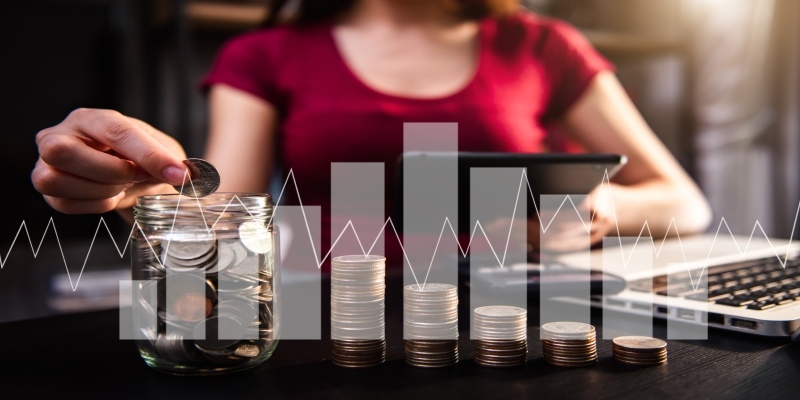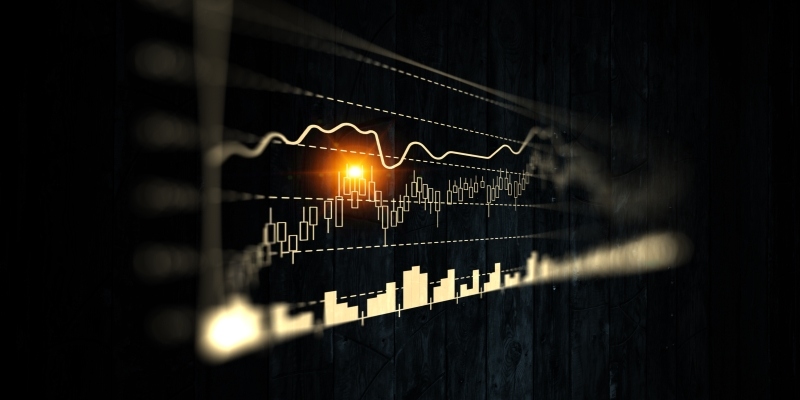Decoding CPI: Navigating the Consumer Price Index and Its Impact on Your Wallet
Dec 29, 2023 By Susan Kelly
Welcome to the fascinating universe of the Consumer Price Index (CPI), where the seemingly mundane act of buying your favorite snacks or upgrading your smartphone intertwines with the intricate dance of economic indicators. The CPI, a silent puppet master behind price fluctuations, is your financial GPS in the world of inflation.
In this article, we'll embark on a journey to unravel the mysteries of the CPI, exploring its role in shaping everyday choices and its impact on broader economic landscapes. Buckle up as we demystify this essential concept and empower you to decode the language of inflation.
Unpacking the Consumer Price Index (CPI)
Understand the basics of CPI and how it calculates the average change in prices for goods and services.
What is CPI?
The Consumer Price Index (CPI), at its essence, is a statistical tool that tracks the average fluctuations in the prices that consumers pay for a basket of goods and services over a certain period. It serves as a financial barometer, providing insights into the economic climate by showing whether prices are skyrocketing or remaining relatively stable.
This index is crucial because it helps us understand the cost of living and the purchasing power of money. It's like a financial compass guiding us through the economic landscape.
How is CPI Calculated?
Don't be daunted by the thought of intricate mathematical computations. The process of calculating the Consumer Price Index (CPI) is more straightforward than you might imagine. The Bureau of Labor Statistics (BLS), a U.S. government agency, conducts surveys involving thousands of households to gather data on the goods and services that people purchase on a regular basis.
From this data, they construct a representative 'basket' of these items. They then monitor the price changes of this basket over a specific period. The percentage change in the cost of this basket represents the CPI. In other words, it's a measure of how the buying power of money changes due to inflation or deflation.
CPI in Action: Everyday Impact
Explore the real-world consequences of CPI, from the impact on your wallet to adjustments in wages and investment strategies.
Inflation and Your Wallet
Here's where the rubber meets the road – the relationship between CPI and inflation. Inflation is the sustained increase in the general level of prices for goods and services. Picture it as a silent thief, eroding the purchasing power of your hard-earned money.
When the CPI rises, inflation is on the prowl, and the cost of living edges upward. Your $5 coffee might become $6, and that mid-range sedan you've been eyeing could suddenly be a bit pricier. Understanding CPI helps you anticipate these shifts and make informed financial decisions.
Wage Adjustments
Have you ever noticed a change in your paycheck? This is often due to the Consumer Price Index (CPI). The CPI is a tool used by governments and businesses alike to adjust wages in line with the cost of living. If the CPI shows an increase in prices, it's a signal that the cost of living is rising.
To maintain your purchasing power, your employer may adjust your salary accordingly. So, the next time you see a change in your salary, remember it's often a reflection of changes in the CPI and the cost of living.

Investment Strategies
Attention, investors! The Consumer Price Index (CPI) plays a significant role in shaping investment decisions. When inflation trends upward, certain assets, such as real estate or commodities, may become more attractive. These assets are known to retain their value more effectively during periods of inflation.
Being aware of CPI trends can be a valuable tool in guiding your investment strategy. It can help you make informed decisions that safeguard your financial future. So, understanding the CPI isn't just for economists - it's a crucial part of smart investing.
CPI and the Big Picture
Examine the broader implications of CPI on government policies, economic indicators, and its role in shaping the overall economic landscape.
Government Policies
Governments globally depend on the Consumer Price Index (CPI) to shape their economic strategies. Central banks, especially, utilize this data to adjust interest rates accurately. If the CPI suggests a looming risk of inflation, they may increase interest rates. This action is intended to temper expenditure and maintain price stability, thereby ensuring a balanced economy.
Economic Indicators
The Consumer Price Index (CPI) doesn't operate in isolation within the economic environment. It works in harmony with other key indicators, forming a comprehensive picture of economic trends. Together with GDP growth and unemployment rates, the CPI offers a well-rounded perspective on the state of the economy. This collective data is invaluable for policymakers and analysts in assessing the overall economic well-being.

The Limitations of CPI
While the Consumer Price Index (CPI) is a crucial tool in economic analysis, it's important to recognize its limitations before fully embracing it. The CPI may not accurately reflect the intricacies of individual spending patterns. Changes in the quality of goods and services or advancements in product innovation can also impact the precision of the index. Moreover, regional disparities can distort the results.
This is particularly true in countries with diverse economies and varied cost of living across different regions. Therefore, while the CPI is a valuable tool, it should be used in conjunction with other economic indicators for a more comprehensive understanding of economic health. It's always essential to consider these factors when interpreting CPI data.
Conclusion
In a nutshell, the Consumer Price Index (CPI) is your financial compass, pointing towards the direction of inflation and the cost of living. Its impact ripples through your daily choices, from the morning cup of coffee to larger financial decisions like investments and salary adjustments.
So, the next time you witness a price hike at your local grocery store, remember that the CPI is likely pulling the strings behind the scenes. Understanding this economic indicator empowers you to navigate the dynamic terrain of inflation, making informed choices for a more financially resilient future. Stay curious, stay informed, and let the CPI be your guide in the economic maze.
-
 Know-how Jan 29, 2024
Know-how Jan 29, 2024How to Get Rid of a Co-Signed Auto Loan
Paying off the car loan is the simplest way to get rid of a co-signer. This may not be the best course of action if the removal was prompted by financial difficulties, but paying out the debt in full will release both the principal borrower and the co-signer from liability.
-
 Banking Jan 07, 2024
Banking Jan 07, 2024Noteworthy Banks for Your Small Business
Finding the best bank for your small business can be challenging. We've researched noteworthy banks, so you can make a well-informed decision regarding managing your finances and finding potential loans.
-
 FinTech Sep 12, 2024
FinTech Sep 12, 2024The Top 5 Fintech Innovators in San Diego for 2024
The top 5 fintech companies in San Diego that are revolutionizing money management in 2024. Learn how these innovative startups are keeping us financially savvy with the latest technology
-
 Know-how Nov 20, 2023
Know-how Nov 20, 2023How To Get a Trademark for Your Name (2023 Guide)
In the corporate world, one's reputation is crucial. Companies that value their brand's identity should protect it by registering their company name as a trademark. Registering a trademark is important in developing a business since it protects the company's intellectual property.
